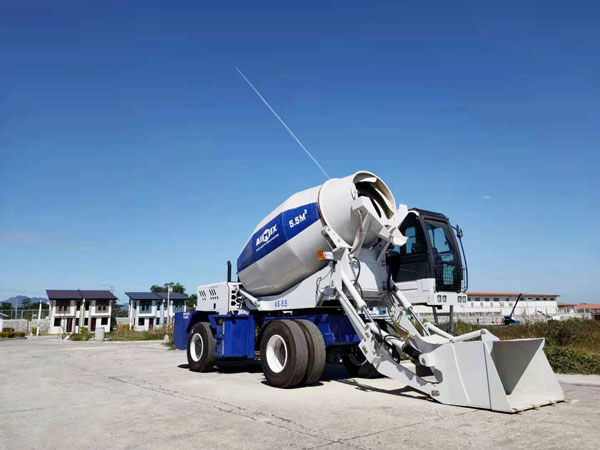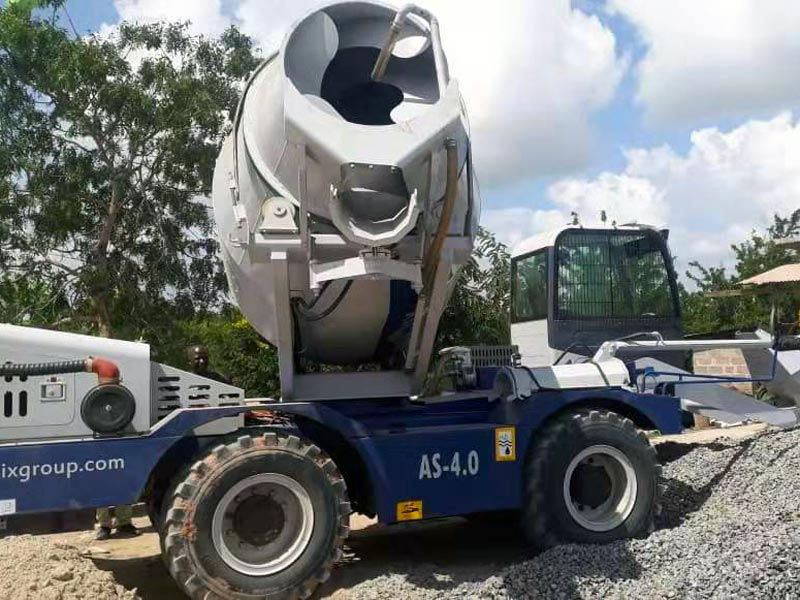How Many People Do You Need to Operate a Self Loading Concrete Mixer?
- aimixglobal2024
- 2024年10月8日
- 讀畢需時 3 分鐘
The efficiency of construction projects depends on both the machinery and the manpower involved. A frequently asked question is, "How many people do you need to operate a self loading concrete mixer?" Understanding the manpower requirements for this equipment is crucial for effective project planning. This article will delve into the operational needs and benefits of self loading concrete mixers.

What is a Self-Loading Concrete Mixer?
A self-loading concrete mixer is a versatile machine designed to load, mix, and transport concrete. It combines several functions into one unit, making it an efficient and cost-effective solution for various construction projects. But how many people are required to operate it? Let's find out.
Operational Simplicity
One of the primary advantages of a self loading concrete mixer is its operational simplicity. Typically, you need only one skilled operator to handle the machine. This operator is responsible for loading materials, mixing the concrete, and transporting it to the desired location.
The operator controls the machine from a cabin equipped with user-friendly controls and displays. This setup allows for easy monitoring and adjustments, ensuring efficient and accurate concrete production.
Why Only One Operator?
The design of Aimix self-loading concrete mixers aims to minimize the need for additional manpower. These machines are highly automated and come with features that simplify operations. For instance, they often include weighing systems, automated water dosing, and precise mixing mechanisms.
Automation and Efficiency
Automation plays a significant role in reducing the need for multiple operators. The weighing system ensures accurate measurement of materials, while the automated water dosing system maintains the correct water-cement ratio. These features eliminate the need for additional personnel to manually measure and mix materials.
Moreover, the machine's mobility allows the single operator to transport the mixed concrete directly to the construction site. This reduces the need for additional labor to transport the concrete, further enhancing efficiency.

Supporting Roles
While one operator can efficiently handle the self loading concrete mixer, having supporting personnel can be beneficial. These roles include site supervisors, quality control inspectors, and helpers for material handling.
Site Supervisors and Quality Control
Site supervisors oversee the overall construction project, ensuring that all activities align with the project plan. They coordinate with the operator to ensure timely concrete production and delivery. Quality control inspectors monitor the concrete quality, ensuring it meets the required standards.
Additionally, helpers can assist in handling materials like aggregates, cement, and water, ensuring a continuous supply to the mixer. While these roles are not mandatory for operating the mixer, they contribute to smoother and more efficient operations.
Training and Skill Requirements
Operating a self loading concrete mixer requires specific skills and training. The operator must be familiar with the machine's controls and functions. Proper training ensures safe and efficient operations, reducing the risk of accidents and equipment damage.
Importance of Training
Training programs usually cover machine operation, maintenance, and safety procedures. These programs equip operators with the knowledge and skills needed to handle the equipment effectively. Investing in operator training enhances productivity and ensures high-quality concrete production.
Additionally, trained operators can quickly identify and address any issues that may arise during operations. This proactive approach minimizes downtime and maintains project timelines.
Conclusion: Efficient Manpower Utilization
In conclusion, operating a self loading concrete mixer typically requires only one skilled operator. The machine's design and automation features minimize the need for additional manpower, enhancing efficiency and cost-effectiveness.
However, supporting roles like site supervisors, quality control inspectors, and material handlers can further optimize operations. These roles ensure smooth coordination, high-quality concrete production, and timely project completion.
Proper training is essential for operators to handle the mixer safely and efficiently. Investing in training programs enhances productivity and reduces operational risks.
This knowledge ensures efficient resource utilization, leading to successful construction projects.




留言